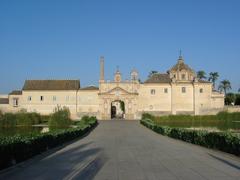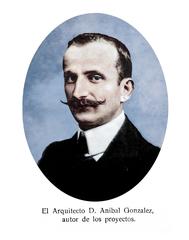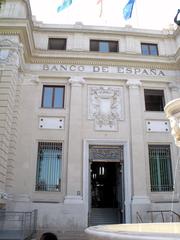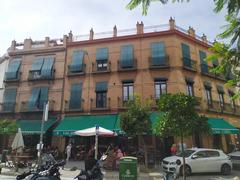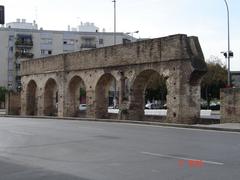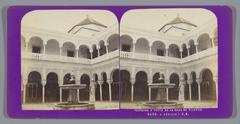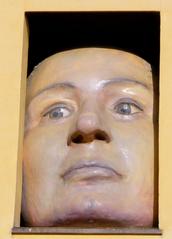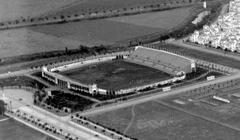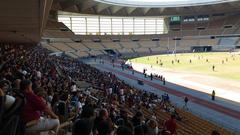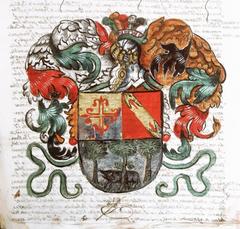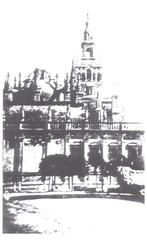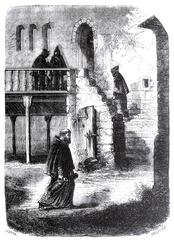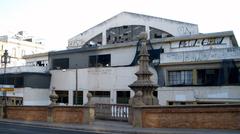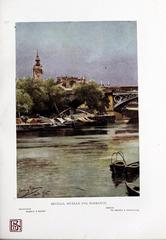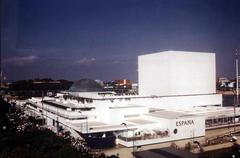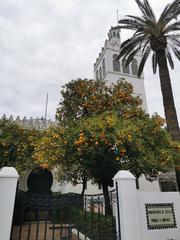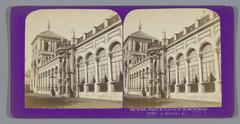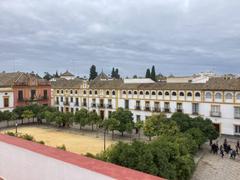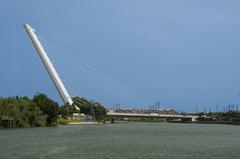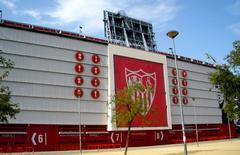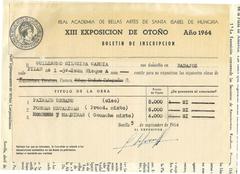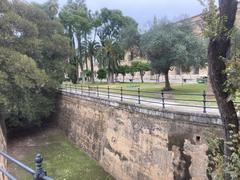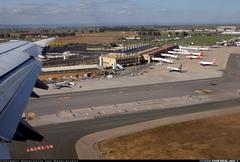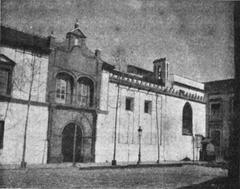Archbishop’s Palace Seville: Visiting Hours, Tickets, and Historical Sites Guide
Date: 04/07/2025
Introduction
Nestled in the heart of Seville, the Archbishop’s Palace (Palacio Arzobispal de Sevilla) is a magnificent embodiment of the city’s religious, cultural, and architectural heritage. With its roots reaching back to the aftermath of the Christian Reconquest in 1248, the palace has long served as the official residence of the Archbishop of Seville, symbolizing the enduring presence and influence of the Catholic Church in Andalusia. The palace’s blend of Roman, Mudéjar, Renaissance, Baroque, and Neoclassical styles—and particularly its striking 18th-century Baroque façade—makes it a highlight of Sevillian artistry.
Inside, visitors encounter an exceptional collection of paintings, sculptures, and decorative arts by masters such as Bartolomé Esteban Murillo and Juan de Valdés Leal, reflecting the palace’s status as a center of artistic patronage. Throughout history, the palace has played a pivotal civic and religious role, from hosting monarchs and dignitaries to serving as a headquarters during the Napoleonic invasion.
This guide provides essential information for planning your visit, including current visiting hours, ticket options, accessibility accommodations, guided tours, and travel tips for exploring the bustling historic district surrounding the palace. Its proximity to landmarks like the Seville Cathedral and the Giralda further enriches the visitor experience. For official updates and further details, consult resources such as the Turismo Sevilla website and the Archdiocese of Seville Official Site.
Table of Contents
- Introduction
- Origins and Historical Development
- Architectural Evolution
- Artistic and Cultural Significance
- Historical Events and Notable Residents
- Visiting Hours and Ticket Information
- Guided Tours and Special Events
- Accessibility
- Travel Tips & Nearby Attractions
- Visuals and Media
- Frequently Asked Questions (FAQ)
- Conclusion & Call to Action
- References
Origins and Historical Development
The Archbishop’s Palace traces its beginnings to the period following the Christian Reconquest of Seville in 1248. Commissioned by Raimundo de Losana, the first Christian bishop, the palace began as a modest complex tailored to the practical needs of the new ecclesiastical authority (Sevilla Confidencial; Turismo Sevilla). Over centuries, the palace expanded in size and grandeur, adapting to the growing power and prestige of the Archdiocese.
Architectural Evolution
The palace is a living timeline of architectural innovation, featuring Roman, Mudéjar, Renaissance, Baroque, and Neoclassical elements. The main façade, completed in the early 18th century by Lorenzo Fernández de Iglesias and Diego Antonio Díaz, is a splendid example of Sevillian Baroque, notable for its albero yellow and sangre de toro red colors and intricate sculptural details. The palace’s interconnected courtyards, grand marble staircases, and richly decorated halls are adorned with artwork influenced by both Spanish and international masters (Turismo Sevilla; Veebrant).
Artistic and Cultural Significance
The palace houses a significant collection of paintings, sculptures, and decorative arts spanning the 16th to 20th centuries. The pinacoteca features works by Murillo, Juan de Valdés Leal, Cristóbal Gómez, and others. The palace’s library contains over 1,600 volumes and an important historical archive, making it a resource for scholars of Andalusian history. The oratory and private chapels are decorated in exuberant Baroque style, highlighting the palace’s role as a center of religious and artistic patronage (Sevilla Confidencial).
Historical Events and Notable Residents
Throughout its long history, the palace has served as the residence of Seville’s archbishops since 1251. It was occupied by Marshal Soult during the Napoleonic invasion and has hosted monarchs, foreign dignitaries, and key religious figures. Its continuous use underscores its significance in the city’s religious and civic life (Sevilla Confidencial).
Visiting Hours and Ticket Information
The Archbishop’s Palace is not regularly open to the public due to its administrative function, but special public openings are generally scheduled twice a month on Saturdays and during select cultural events.
- Visiting Hours: Typically on two Saturdays per month; confirm dates via the official tourism website.
- Admission: Entry is usually free during special openings.
- Tickets: Advance booking is strongly recommended due to limited availability; check the official tourism site for reservations.
- Group Visits: Guided group tours can be arranged through local cultural organizations or for major events.
Guided Tours and Special Events
Guided tours are available during special openings and major festivals, providing expert commentary on the palace’s history, art, and architecture. Additional cultural events, art exhibitions, and concerts are occasionally hosted, offering rare access to the palace’s interiors.
Accessibility
Main courtyards and ground-floor rooms are generally accessible. However, upper floors and some galleries require stair access, and there are limited permanent adaptations for visitors with mobility challenges. Contact the palace or tourism office in advance if you have specific accessibility needs.
Travel Tips & Nearby Attractions
- Location: Plaza Virgen de los Reyes, s/n, 41004 Seville, Spain—opposite the Giralda and adjacent to the Seville Cathedral.
- Getting There: Easily accessible by foot, with tram and bus stops on nearby Avenida de la Constitución.
- Nearby Sights: Alcázar of Seville (8 minutes), General Archive of the Indies (5 minutes), Casa de los Pinelo (2 minutes). Consider combining your visit with these sites for a comprehensive tour of Seville’s historical core.
- Dress Code: Modest attire is recommended due to the religious nature of the building.
- Photography: Non-flash photography is generally permitted in public areas; restrictions may apply to sensitive artworks or during events.
Visuals and Media
The Baroque façade of the Archbishop’s Palace, Plaza Virgen de los Reyes.
Interior courtyard featuring arcaded galleries and azulejo tilework.
Frequently Asked Questions (FAQ)
Q: When is the Archbishop’s Palace open to the public?
A: Typically two Saturdays per month and during select cultural events. Check the official tourism site for updates.
Q: Is there an admission fee?
A: Entry is generally free during special openings.
Q: Are guided tours available?
A: Yes, usually during special openings or events; advance booking is advised.
Q: Is the palace wheelchair accessible?
A: Ground-floor areas and courtyards are accessible; upper floors have limited access. Contact the palace in advance for details.
Q: What are the best nearby attractions?
A: The Seville Cathedral and Giralda, Alcázar, General Archive of the Indies, and Casa de los Pinelo—all within walking distance.
Conclusion & Call to Action
The Archbishop’s Palace of Seville is a must-visit for anyone interested in the city’s spiritual, artistic, and historical legacy. Its blend of architectural splendor, artistic treasures, and pivotal role in Seville’s cultural life make it a highlight of any visit to Andalusia. Due to its limited public openings, it is crucial to plan ahead and secure tickets in advance.
References
- Las joyas del Palacio Arzobispal de Sevilla, 2025, Sevilla Confidencial
- Palacio Arzobispal de Sevilla, 2025, Turismo Sevilla
- Visiting the Real Alcázar Palaces and Gardens in Seville, 2025, European Traveler
- Palaces of Seville, 2025, Sevilla Secreta
- History of Seville, 2025, World History Journal
- Archbishop’s Palace Seville Official Site, 2025, Archdiocese of Seville
- Official Seville Tourism Website: Archbishop’s Palace
